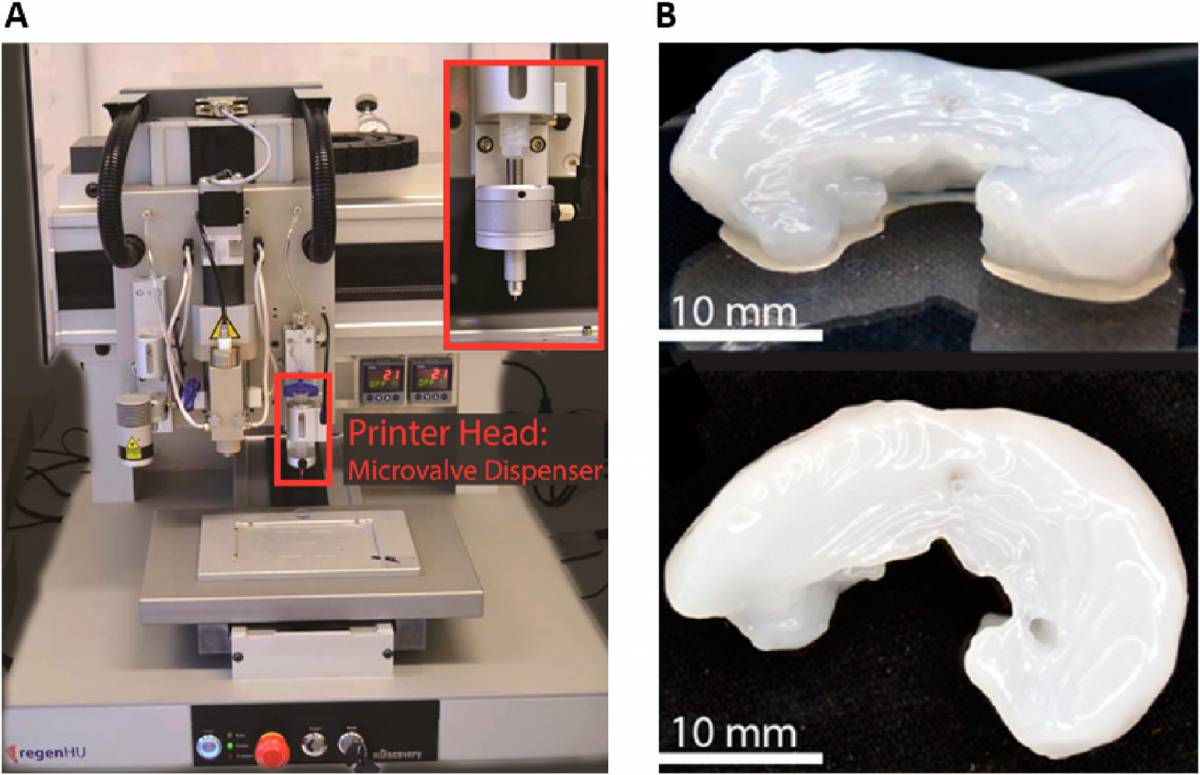Paper exploring the merits of 3D bio-printing for bone regeneration gains international recognition
Technological advances mean that traditional joint replacement operations could become redundant in the coming years, according to the authors of a popular article that recently won an award.
The paper – titled ‘3D bioactive composite scaffolds for bone tissue engineering’ – received a Best Paper award from China-based company KeAi as part of the publisher’s 10-year anniversary celebrations.
It was originally published in the Bioactive Materials medical journal in 2017 and was selected from more than 200 papers that have appeared during the last decade.
The paper – which has accrued more than 1,100 citations from other orthopaedic specialists and researchers, making it a landmark paper in its field – explores the prospect of three-dimensional biological printed hip and knee joint replacements being mixed with a patient’s own biological cells.
The researchers investigated using 3D bio-printing technology with patient stem cells and other substances found in bones in order to create ‘scaffolds’ that could promote regeneration in the body.
Bone is the second most commonly transplanted tissue worldwide, and more than four million operations using bone grafts or bone substitute materials are conducted annually to treat bone defects. Developing bioactive 3D scaffolds to support bone regeneration has now become a key area of focus in the rapidly expanding field of bone tissue engineering.
By using 3D printing technology combined with biological components, such as patient stem cells, we’ll be able to produce live biological implants that could be placed into patients and heal into place within them [Gareth Turnbull]
Gareth Turnbull was a clinical research fellow at NHS Golden Jubilee in Clydebank, Glasgow, when the study was published. It also contributed to his biomedical engineering PhD at the University of Strathclyde.
Speaking as the paper’s primary author, he said: ‘A lot of patients can develop significant bone loss or destruction due to a number of conditions such as arthritis, cancer, infection or trauma. When patients lose bone, it can be a difficult and time-consuming process to regenerate or heal these defects.
‘The idea is that by using 3D printing technology combined with biological components, such as patient stem cells, we’ll be able to produce live biological implants that could be placed into patients and heal into place within them, instead of the current alternatives like metal implants, which can fail over time in the body as they wear out or come loose.
Mr Turnbull added: ‘The main benefit for patients would be that instead of having your tumour or bone defect treated with an artificial implant, or having your arthritis treated with joint replacement, you would be able to receive a biological implant that would potentially contain your own cells that would then grow into your own body and become part of you.’
'Significant leap forward'
The Orthopaedic team at NHS Golden Jubilee, which currently performs about one in three hip and knee replacements in Scotland, is helping to lead the way in a number of innovative techniques, including the use of robotics in joint replacements and enhanced recovery after surgery pathways.'
Co-author Jon Clarke, the NHS Golden Jubilee’s orthopaedic research lead, said: ‘Joint replacements, like any mechanical devices, will eventually wear out, often within the lifetime of the patient. Biological constructs offer the potential for longer term survival, which could avoid the need for further operations.
‘We believe technology like this could be become available for patient use within the next 10 years as other surgical specialties have managed to use similar technology elsewhere in the body, including other bones.
Professor Clarke added: ‘We’re very proud that our paper has been cited by other researchers so many times and we are very much looking forward to seeing where this research leads us in the near future.’
Another co-author, Will Shu, professor of biomedical engineering at the University of Strathclyde, said: ‘Our collaboration with NHS Golden Jubilee represents a significant leap forward in surgical technology. By combining our expertise in 3D bio-printing with their pioneering techniques in orthopaedic surgery, we're not just enhancing current treatments but revolutionising them.’
NHS Golden Jubilee has a national portfolio which includes the Golden Jubilee University National Hospital, NHS Scotland Academy, national Centre for Sustainable Delivery, Golden Jubilee Research Institute and Golden Jubilee Conference Hotel.
Author: I A McMillanShare it with















